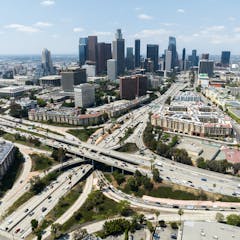
Articles on Toxic waste
Displaying 1 - 20 of 21 articles

If not properly managed, heavy metals such as arsenic can accumulate in landfills and leach into soils and groundwater.

An analysis by scholars at the University of California, Davis showed that just a small number of cities in California actively consider racism when developing their plans.

Canada is seen as leading the way in banning single-use plastics. But how comprehensive are these actions, and how realistic is the dream of a zero-waste future?

The common timber treatment CCA is made up of heavy metals copper, chromium and arsenic. They don’t decompose and leach into soil and water. Why does New Zealand still allow its use?

Research proves that plant-based fiber from pineapple can be used as an alternative material to create biodegradable single-use masks

The production and release of synthetic chemicals worldwide is destabilising the Earth system.

The Doomsday Clock has never before been as close to midnight as it is now. There is scant hope of it winding back on its 75th anniversary.

A high court judge said the Environment Agency was failing to fulfil its legal duty to protect the public.

Despite knowing how harmful it can be, companies and businesses (primarily those in Europe and the US) target countries in the Gulf of Guinea as a dump for their toxic waste.

Batteries power much of modern life, from electric and hybrid cars to computers, medical devices and cellphones. But unless they’re made easier and cheaper to recycle, a battery waste crisis looms.

Small-scale gold mining operations in developing countries are major sources of toxic mercury pollution, using techniques that haven’t changed much since the California Gold Rush 150 years ago.

Snorkeling off the California coast, a high school student found heaps of golf balls on the ocean floor. With a marine scientist, she showed that golf courses were producing tons of plastic pollution.

Many homes, parks and businesses in US cities stand on former manufacturing sites that may have left legacy hazardous wastes behind. A new book calls for more research into our urban industrial past.

Gentrification is not the only path for improving urban neighborhoods. A cleanup in Brooklyn and Queens offers another, more inclusive model that scholars have dubbed ‘just green enough.’

Epidemiologists study disease outbreaks in populations to determine who gets sick and why. In the wake of this year’s hurricanes, they are assessing impacts from mold, toxic leaks and other threats.

Natural disasters expose people to toxic gases, bacterial illness and other serious dangers. How can people maximize their safety as they return home?

A new study shows that anchovies – key food for larger fish – are attracted to plastic trash because it smells like food. This suggests that toxic substances in plastic could move up through food chains.

Cleaning up and reusing contaminated sites, known as brownfields, can create jobs and promote economic growth. But it also can drive gentrification that prices out low-income residents.

President Trump’s budget would cut funding for Superfund, which cleans up the nation’s most toxic sites, by nearly one-third. An economist explains how Superfund cleanups benefit local communities.

Highly-alkaline industrial waste is usually sent to landfill. But while it might be dangerous, it’s also useful.
